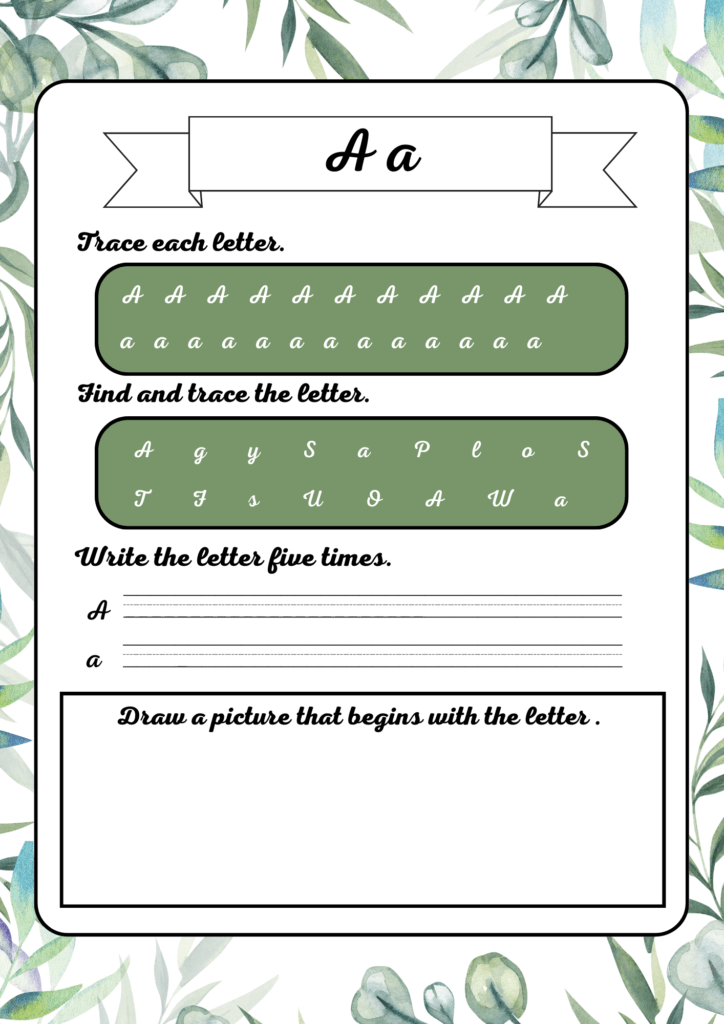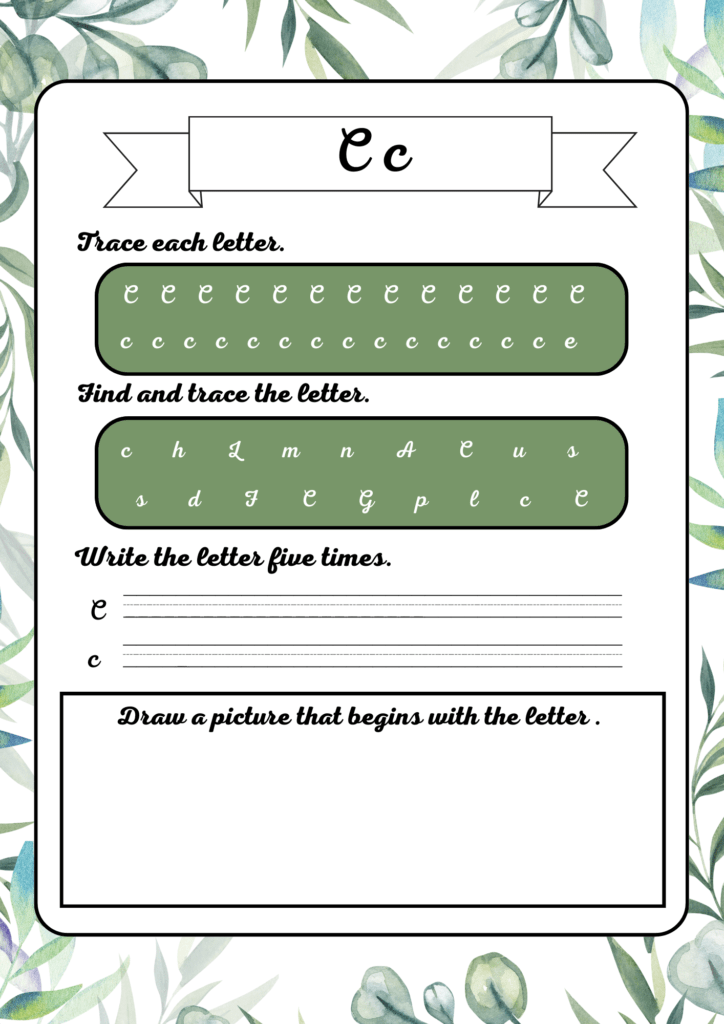Print Handwriting Worksheets PDF Free-How to have good handwriting [2024]
Print Handwriting Worksheets PDF Free

In an era dominated by digital communication, the value of good, legible handwriting remains significant in educational and personal development. Handwriting is more than just a means of communication; it is a vital skill that plays a crucial role in cognitive development, motor skills, and personal expression. Our Free Printable Handwriting Worksheets page is dedicated to providing a wide array of resources to help children and students enhance their handwriting abilities, whether they are just starting to learn the alphabet or refining their cursive script.

Download Cursive Writing book
Download a free ebook: Disputed Handwriting by Jerome Buell Lavay
Zion Edutech
Learning Has No Boundaries
The Enduring Importance of Handwriting
Handwriting is a foundational skill that impacts various aspects of learning and development. Here are some key reasons why handwriting continues to be important:
- Cognitive Development
- Engagement of Cognitive Processes: Handwriting involves complex cognitive processes that typing does not. It requires fine motor skills, visual recognition, and memory, which are essential for learning and retention. Studies have shown that students who take handwritten notes retain information better than those who type their notes.
- Memory and Learning: Writing by hand stimulates the brain in ways that typing does not. The process of forming letters and words by hand enhances memory retention and understanding. This is because the physical act of writing integrates different brain functions, reinforcing learning through multisensory engagement.
- Fine Motor Skills
- Development of Motor Skills: Handwriting helps children develop fine motor skills and hand-eye coordination. These skills are foundational for many other activities, such as playing musical instruments, sports, and even daily tasks like buttoning a shirt.
- Dexterity and Control: Writing by hand requires precise movements and control, helping children develop dexterity and coordination. These skills are crucial for academic tasks and beyond.
- Personal Connection and Expression
- Emotional and Personal Touch: Handwritten notes, letters, and cards carry a personal touch that digital messages often lack. Handwriting allows individuals to convey their emotions and personality through their unique script, making communication more meaningful and memorable.
- Creative Expression: Handwriting is an art form that allows for creative expression. Many artists and graphic designers incorporate hand-drawn elements into their work, adding a personal and artistic dimension to their creations.
- Historical and Cultural Preservation
- Understanding Historical Documents: Many historical documents, manuscripts, and artifacts are written by hand. The ability to read and understand these materials is crucial for historians, researchers, and archivists in preserving our cultural heritage.
- Cultural Significance: Handwritten documents are not only historical records but also cultural artifacts that reflect the time, place, and people who created them. Preserving handwriting skills helps maintain a connection to our past.
- Legal and Practical Uses
- Legal Documents and Signatures: Handwritten signatures on legal documents, contracts, and agreements are often required for authenticity and legal validity. The importance of handwriting in formal agreements underscores its continued relevance.
- Practical Applications: In many situations, handwriting is more practical than using digital devices. Filling out forms, taking quick notes, or jotting down ideas on the fly are tasks often done more efficiently by hand.
- Accessibility
- Inclusive Communication: Not everyone has easy access to digital devices, and some individuals may have physical limitations that make typing challenging. Handwriting ensures that information remains accessible to a broader population, including those who may not have digital resources.
- Educational Foundations
- Early Literacy Development: Handwriting is an essential skill taught in schools as part of early literacy education. It helps children develop fine motor skills, hand-eye coordination, and an understanding of letter formation, which are foundational skills for learning to read and write effectively.
- Spelling and Grammar: The physical task of writing by hand helps reinforce spelling and grammar skills. This tactile process helps students internalize the rules of language more effectively than typing.
- Brain Engagement and Creativity
- Stimulation of Cognitive Functions: Handwriting has been shown to stimulate the brain in unique ways, potentially enhancing cognitive function and creativity. The act of writing can be a valuable tool for brainstorming and idea generation, as it engages different parts of the brain than typing.
- Enhanced Learning: Studies have demonstrated that the process of writing by hand can enhance learning and retention of new information. This is particularly important in educational settings, where the goal is to promote deep understanding and long-term retention of knowledge.
Our Free Printable Handwriting Worksheets
Our collection of free printable handwriting worksheets is designed to support children’s handwriting development at every stage. Whether your child is just starting to learn the alphabet or is ready to master cursive writing, we have resources to meet their needs. Here’s an overview of what you can find on our page:
- Alphabet Practice
- Traceable Letters: Our alphabet practice worksheets include traceable letters to help children learn proper letter formation. These worksheets provide guided practice to ensure children develop good habits from the start.
- Uppercase and Lowercase: Worksheets are available for both uppercase and lowercase letters, helping children recognize and write each letter correctly.
- Word and Sentence Tracing
- Common Words and Phrases: We offer worksheets for practicing common words and phrases, helping children build their vocabulary and writing fluency.
- Sentence Construction: For more advanced students, we provide sentence tracing worksheets to practice constructing and writing complete sentences. This helps with understanding sentence structure and punctuation.
- Cursive Writing
- Introduction to Cursive: Our cursive writing worksheets introduce students to the elegant art of cursive script. Starting with individual letters, students can gradually progress to writing words and sentences in cursive.
- Advanced Cursive Practice: For students who have mastered the basics, we offer advanced cursive practice sheets to refine their skills and improve their handwriting speed and legibility.
- Themed Worksheets
- Engaging Themes: To keep learning fun and engaging, our worksheets feature a variety of themes such as holidays, seasons, animals, and more. These themed worksheets can motivate children to practice their handwriting while enjoying the content.
- Customizable Sheets: We also offer options to create personalized worksheets tailored to your child’s interests and needs, making handwriting practice more enjoyable and relevant.
- Fine Motor Skills Development
- Pre-Writing Exercises: For younger children or those needing extra practice with fine motor skills, we provide pre-writing exercises. These activities help children develop the control and coordination needed for writing.
- Shape and Pattern Tracing: Tracing shapes and patterns can be a fun way to build the foundational skills required for handwriting. These worksheets help children practice the movements needed to form letters and numbers.
- Printable Formats
- PDF Files: All our handwriting worksheets are available in PDF format, making them easy to download and print. This allows for convenient access and use at home or in the classroom.
- High-Quality Printables: Our worksheets are designed to be clear and easy to read, ensuring that children can practice without frustration.
How to Use Our Handwriting Worksheets
Using our handwriting worksheets is straightforward and flexible, allowing parents, teachers, and students to integrate them into daily practice easily. Here are some tips for making the most of our resources:
- Daily Practice
- Consistent Practice: Encourage children to practice their handwriting daily. Consistent practice helps reinforce learning and build muscle memory for letter formation.
- Short Sessions: Keep practice sessions short and focused, especially for younger children. Short, regular sessions are more effective than longer, less frequent ones.
- Positive Reinforcement
- Encouragement and Praise: Offer positive reinforcement and praise for effort and improvement. Encouragement helps build confidence and motivation to continue practicing.
- Reward Progress: Consider setting up a reward system for completing worksheets or achieving handwriting goals. Small rewards can motivate children to practice regularly.
- Gradual Progression
- Start Simple: Begin with basic worksheets, such as tracing individual letters or simple words. Gradually progress to more complex tasks, such as writing sentences or paragraphs.
- Build Complexity: As children become more comfortable with writing, introduce more challenging worksheets to keep them engaged and improving.
- Incorporate Fun Themes
- Themed Worksheets: Use themed worksheets to make handwriting practice more enjoyable. Choose themes that interest your child to keep them engaged and motivated.
- Interactive Activities: Incorporate interactive activities, such as writing letters to family members or friends, to make handwriting practice more meaningful and fun.
- Customizable Practice
- Personalized Worksheets: Take advantage of our customizable worksheets to tailor practice to your child’s specific needs and interests. Personalized practice can be more effective and engaging.
- Address Weaknesses: Use worksheets to target specific areas where your child may need extra practice, such as particular letters or cursive writing.
- Incorporate Technology Wisely
- Balance with Digital Tools: While handwriting practice is essential, it’s also important to balance it with the use of digital tools. Encourage children to use technology responsibly while maintaining their handwriting skills.
- Interactive Apps: Consider using interactive handwriting apps that complement our printable worksheets. These apps can provide additional practice and reinforce learning in a fun and engaging way.
Conclusion
Handwriting remains a vital skill in the digital age, contributing to cognitive development, fine motor skills, personal expression, and practical applications. Our Free Printable Handwriting Worksheets page offers a comprehensive collection of resources to support children’s handwriting development at every stage. From alphabet practice to advanced cursive writing, our worksheets are designed to make learning enjoyable and effective.
By incorporating our worksheets into daily practice, encouraging positive reinforcement, and gradually progressing in complexity, children can develop beautiful handwriting that will serve them well throughout their lives. Explore our free printable handwriting worksheets today and help your child or student unlock the many benefits of good handwriting.
Read more: Calligraphy for beginners: A complete guide [2024]
#print handwriting worksheets pdf free #handwriting worksheets for adults
Zion Edutech
Learning Has No Boundaries

